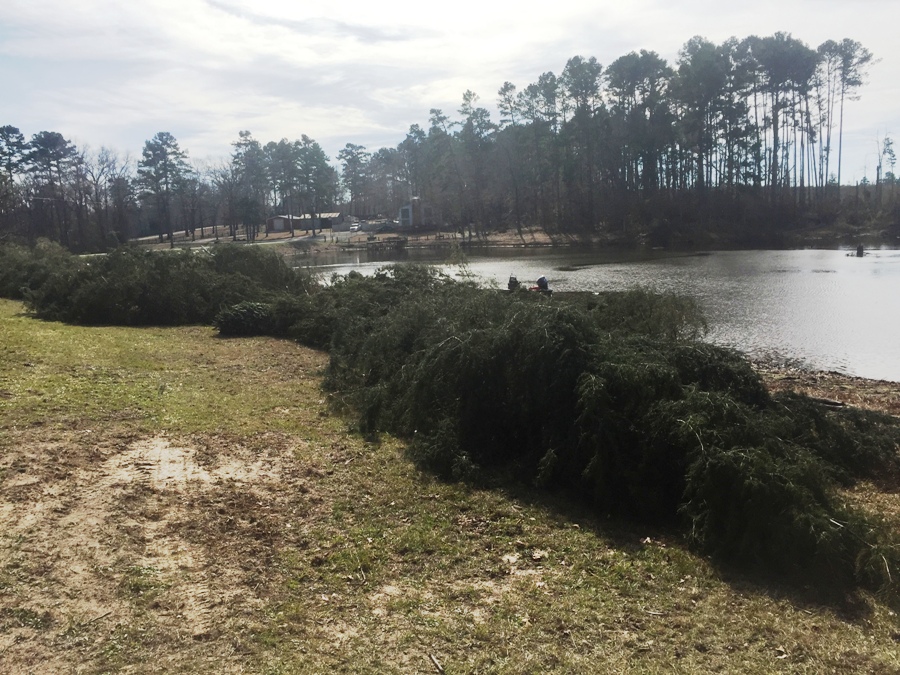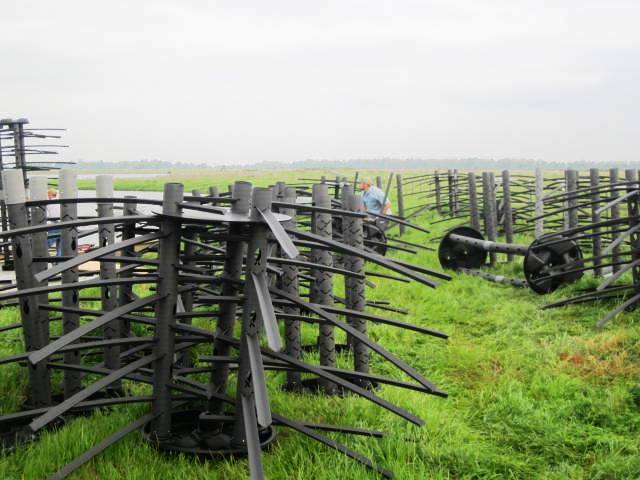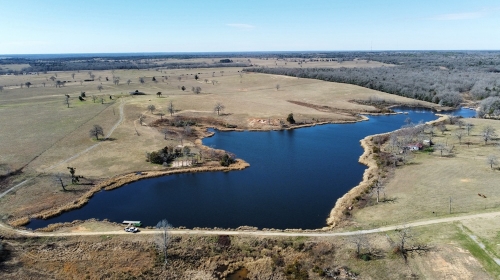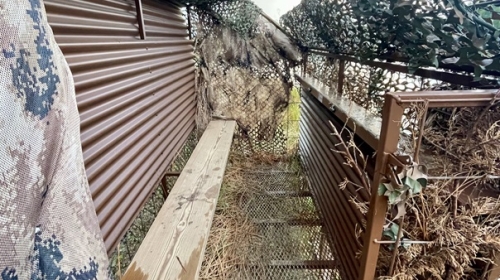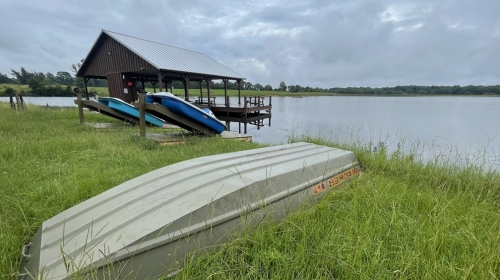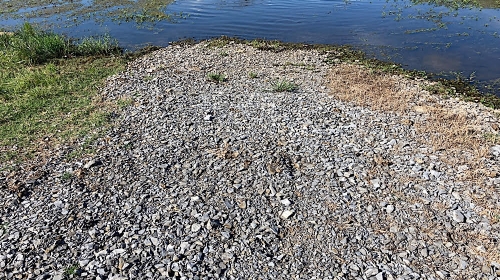Adding Habitat to PWF Lakes
Great habitat is one of the 5 keys to growing bass. The other 4 are water quality, food chain, genetics and harvest. Typically, we add structure to create habitat. This generally comes in two forms: an artificial product called Mossback Fish Attractors, or trees like Eastern Red Cedars. These structures are designed to create areas for bait fish to hide while creating ambush points for bass to attack. If bait fish (Bluegill/Redear Sunfish) have a place to hide and relax, they will make more babies; more babies means more food, and more food means bigger bass.
While artificial habitat can be expensive, often costing thousands of dollars on a big lake, it can be less expensive in the long run. While the name artificial may sound, well... artificial, it is far from being productive. This habitat is permanent, built to be almost snag proof and holds fish. We have installed artificial habitat at several club lakes.
The other habitat we use are trees. We generally use Eastern Red Cedars. These trees last about 2 to 4 years and make great hiding places. They are readily available; which means free. Most landowners love to get rid of them, so finding a source is rarely an issue. The real issue is that they begin breaking down the day you install them. They have a useful life of about 3 years.
There are several research studies in the works both in private and public waters to see if the fish care rather it is artificial or real structure. My guess is that it makes little difference, but what does make a difference is that you have something. The right amount of aquatic vegetation, (10-20% of the lake volume) rock piles, gravel, ledges, humps, buried roads or bridges all play roles in the way fish relate to their environment. Learn to recognize these places using your electronics or studying the lay of the land and your fishing success will improve.
